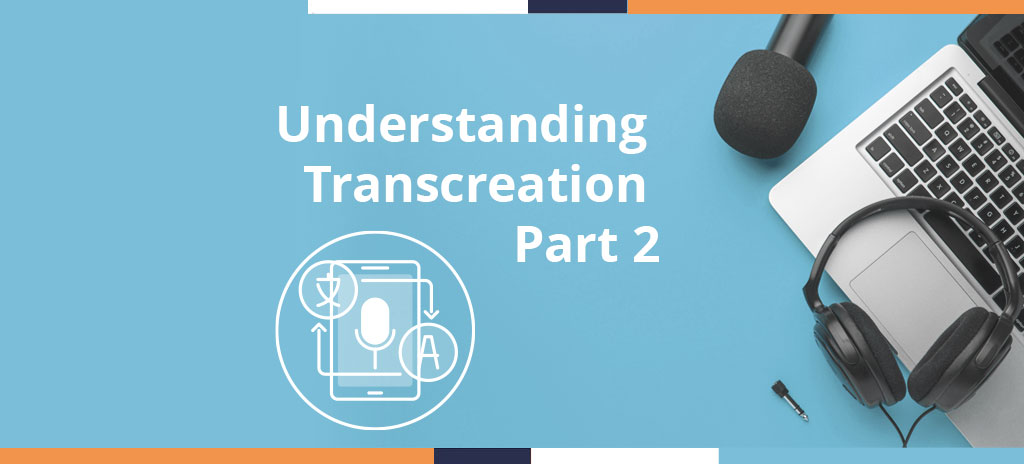The benefits of creative approaches to translation – and what happens when cultural nuance isn’t planned for
Where once selling products and services on a global scale was reserved for big corporations, now, with the help of the internet and modern communications, businesses of any size can operate internationally.
Using language in the most effective way is an important asset when you move into international markets. Considering both linguistic and cultural differences and incorporating these into your multilingual content for new audiences is a must-do if you’re going to be successful globally.
Depending on the type of content and its purpose, transcreation can be a valuable tool in the multilingual kit. Transcreation as its name suggests, is a creative approach to producing text in new languages and lends itself to imaginative and emotive material.
(For a definition of transcreation, check out part one of our blog here)
Let’s look at a few examples of transcreation success stories.
Successful transcreation in practice
Transcreation works best when the content it’s applied to is intended to have a maximum impact on its end consumer and an emotional response is called for. This is why marketing and advertising material benefits from transcreation. Other content types like video games, magazines, television and film, social media and websites can also reap the rewards of using this multilingual strategy.
Global consumer brands give us some brilliant examples of successful transcreation projects. What they often have in common is the focus on a core brand identity that is then adapted to suit local audiences through a variety of marketing channels.
Coca-Cola is a global brand like no other. Coke is sold in over 200 countries worldwide and adapts its advertising strategy to each market. It uses its core message (the enjoyment of drinking a Coke) and its unique and unmistakable logo design as the foundation for culturally nuanced campaigns.
In 2011 Coca-Cola’s marketing team came up with the idea of personalizing the labels on its bottles with first names to encourage the sharing of Coke with people of the same name. This innovative idea was designed to reinforce the sense of connection with the brand and it captured imaginations worldwide. Coca-Cola used the most popular names in each country and cleverly, in China, it changed the names to nicknames, an easier way of expressing affection in the People’s Republic. An excellent example of transcreation at its finest.
Haribo, the German sweet manufacturer established in 1920 in Bonn, has conquered the global market by adapting to each region. Taking into account how tastes change over borders (they do considerably!), Haribo creates flavors to fit. The company also makes ingenious use of language and its famous tagline has been successfully remodeled using transcreation, into many languages. Haribo has been careful to retain the essence of the brand in all the languages it uses and its tagline aims to reproduce the playful, rhyming style regardless of where it appears.
However, some slogans are not easy to rewrite in another language. Nike struggled to translate its ‘Just do it’ slogan for different markets and when the slogan appears now it tends to be in English.
Multilingual marketing troubles
A quick online search produces many examples of failed multilingual marketing where businesses didn’t invest sufficiently in translation solutions for their all-important slogans and other essential text. When this sort of advertising goes wrong it does so spectacularly and rather than boosting trust in the company, the opposite occurs.
HSBC ran a campaign in 2009 with the tagline ‘Assume nothing’ which was mistranslated into several languages as ‘Do nothing’. The subsequent headline story was so difficult to shake that the bank ended up launching a 10-million-dollar rebrand and creating a completely new slogan.
There have been many near misses for firms with established slogans that didn’t translate well in new markets. A Swedish vacuum cleaner manufacturer’s slogan ‘Nothing sucks like an Electrolux’ became a source of hilarity in the US, even though its campaign wasn’t intended for use there. A successful ad campaign in California promoting milk consumption was quickly adapted for the state’s sizeable Spanish-speaking population when it was pointed out that their slogan ‘Got milk?’ became ‘Are you lactating?’ in Spanish. Telecommunications company Orange had to rethink its advertising in Northern Ireland because of the political tensions there and the associations with its color-based name.
That these stories are in the public domain suggests strategic cultural planning wasn’t top of the list for these big international companies. We still talk about problematic marketing translations years later and although the internet is undoubtedly a commercial goldmine for many companies, it also means that issues like these linger on. Unfortunately, poor translation in the age of globalization tends to stick.
Transcreation benefits
Transcreation can be the difference between a smash hit or a box office flop for international campaigns. Transcreation makes sure your company communicates the right message in the right context.
Mistakes are made unintentionally of course, and one of the main challenges of using transcreation is knowing when you need it. In the content explosion we’re currently experiencing it’s important to be precise in selecting which high-value content will gain the most from transcreation. Working with professional language services will help you solve this dilemma and get the full potential from your cross-cultural material.
Transcreation is a device that enables a brand to make a strong, positive and emotional connection with a new audience. By giving primary consideration to the cultural preferences and character of the audience you’re trying to reach, your company will build trust and engagement. Demonstrating knowledge and respect for the target culture helps meaningful communication and the establishment of your brand’s identity.
As globalization brings new opportunities in more culturally diverse markets, transcreation can be a powerful way to maximize your brand’s impact. It will help build awareness of your products and services in new markets and encourage company growth and sales revenue.
Talk to your friendly language services provider
Communicating exactly what you want to achieve when you ask about translation services is essential. Translation covers a wide variety of techniques and strategies and knowing your end goals will help you select the best type of translation for your project.
At t’works, our specialized teams collaborate with you to deliver your company’s multilingual content flawlessly and sensitively. Our professional project managers, native language translators and expert copywriters work together to develop the approach that’s right for your creative language project and help you reach a new, international audience.
At t’works, we make global easy.

